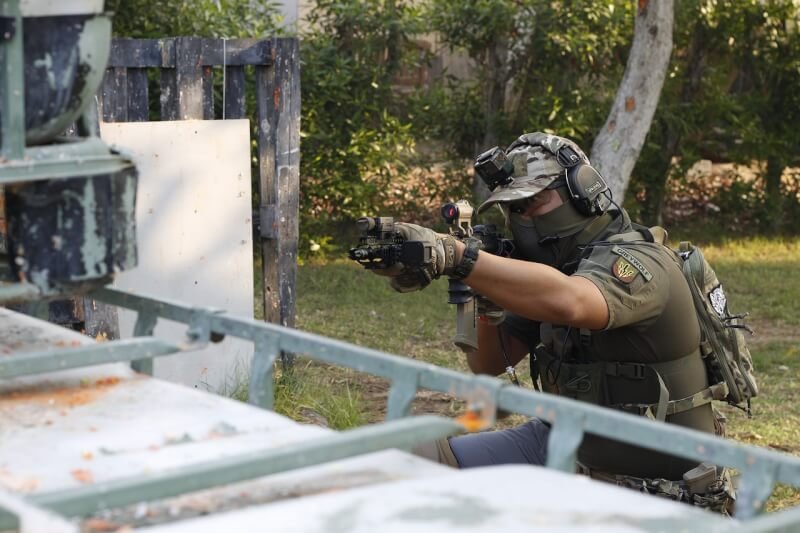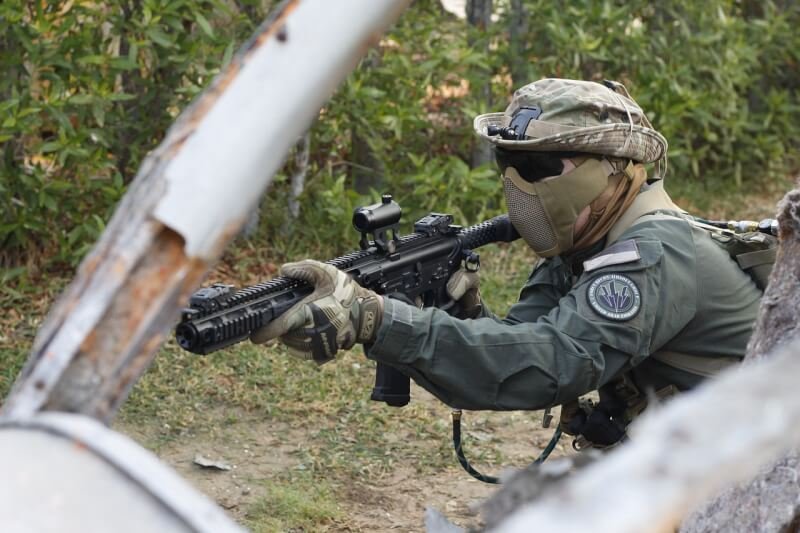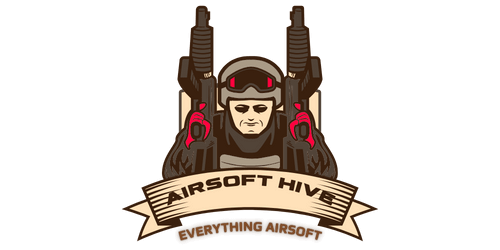Ready to take your airsoft game to the next level? In this article, you will learn the essential strategies and techniques for mastering movement and positioning in airsoft battles. Whether you’re a beginner looking to improve your skills or an experienced player aiming to dominate the field, understanding how to effectively move and position yourself can give you a competitive edge. From utilizing cover and concealment to employing flanking tactics, this guide will equip you with the knowledge needed to navigate any airsoft battlefield with confidence and finesse. So, gear up and get ready to become a force to be reckoned with in the exhilarating world of airsoft.
Understanding Movement and Positioning
Importance of movement and positioning in airsoft battles
In the fast-paced world of airsoft battles, movement and positioning play a crucial role in determining the outcome of a skirmish. Understanding how to effectively move and position yourself on the battlefield can greatly increase your chances of success. Whether you are engaging in individual combat or working as part of a team, mastering these skills is essential.
Basic principles of movement and positioning
To excel in airsoft battles, it is vital to understand the basic principles of movement and positioning. The key is to strike a balance between agility and stealth while maintaining situational awareness. This means being able to analyze your surroundings, identify potential threats and opportunities, and make quick decisions to adjust your movement and position accordingly. By adhering to these principles, you can enhance your tactical advantage and gain the upper hand in the game.
Types of Movement
Individual movement
Individual movement refers to the actions taken by a single player on the battlefield. This type of movement focuses on maintaining personal safety while advancing towards a specific objective or engaging in combat with opponents. It is crucial to move cautiously and stay alert, paying attention to your surroundings and using cover to your advantage. Stealth, surprise, and quick reflexes are key factors in successfully executing individual movement tactics.
Team movement
Team movement involves coordinated actions between multiple players with the objective of achieving a common goal. This type of movement requires effective communication, synchronized actions, and mutual trust among team members. Working together as a unit can enable you to outmaneuver and overpower the opposition, increasing the chances of victory. Team movement tactics can vary depending on the situation, but they often involve flanking maneuvers, cover-to-cover movements, and suppressing fire.
Stealth movement
Stealth movement is a type of movement that focuses on remaining undetected by the enemy. It involves moving slowly, silently, and with minimal visibility to avoid detection. Utilizing natural or artificial camouflage, controlling noise, and using distractions or misdirection are essential techniques for successfully executing stealth movement. When done effectively, stealth movement can give you the element of surprise, allowing you to catch your opponents off guard.
Cover-to-cover movement
Cover-to-cover movement refers to the technique of moving from one form of cover to another while minimizing exposure to enemy fire. This type of movement is crucial in a battlefield where staying in one place for too long can make you an easy target. By utilizing available cover, such as trees, walls, or terrain features, you can traverse the field while reducing the risk of getting hit. Timing, coordination, and communication are vital aspects of successfully executing cover-to-cover movement.
Flanking movement
Flanking movement involves moving around the enemy’s position to attack them from their vulnerable side or rear. This tactic aims to exploit weaknesses in the opponent’s defenses and create confusion and panic among their ranks. Flanking movement requires careful planning, coordination with your team members, and utilizing available cover and concealment. By executing well-coordinated flanking maneuvers, you can disorient the enemy and gain a significant advantage in airsoft battles.

Utilizing Terrain and Cover
Importance of terrain and cover in airsoft battles
Terrain and cover are invaluable assets in airsoft battles. They provide protection, concealment, and strategic advantages to players. Understanding the importance of utilizing terrain features and finding effective cover positions is crucial to surviving and succeeding on the battlefield.
Identifying effective terrain features
When assessing the battlefield, it is vital to identify terrain features that can provide advantages for movement and positioning. These may include natural formations such as hills, valleys, or ridgelines, as well as man-made structures like buildings or barricades. The key is to find spots that provide cover, concealment, and vantage points to observe and engage the enemy while minimizing your exposure.
Maximizing cover utilization
Once you have identified effective cover positions, it is essential to maximize their utilization. This involves understanding the strengths and weaknesses of your cover and adjusting your movement and position accordingly. For example, crouching or going prone behind a solid structure can provide better protection than simply standing behind a low wall. Additionally, using available cover to your advantage allows for faster target acquisition and reduced chances of being hit.
Creating advantageous firing positions
In airsoft battles, creating advantageous firing positions is crucial to gaining the upper hand in engagements. This involves finding spots that offer a clear line of sight to your targets while providing cover for yourself. Utilizing natural or man-made features to stabilize your shooting platform can enhance your accuracy and reduce the chances of being spotted. By carefully selecting and creating firing positions, you can effectively engage your opponents while minimizing the risk to yourself.
Effective Communication
The role of communication in movement and positioning
Communication is a fundamental aspect of successful movement and positioning in airsoft battles. It enables players to coordinate their actions, share information, and react to changing situations swiftly. Effective communication can make the difference between a well-executed maneuver and chaos on the battlefield.
Establishing clear communication protocols
To ensure smooth and efficient communication, it is essential to establish clear protocols within your team. This includes defining and understanding key commands, signals, and procedures used to convey information. Consistency and clarity in communication protocols help minimize the chance of misinterpretation and confusion, allowing team members to respond swiftly and appropriately.
Signaling movement and positions
During airsoft battles, signaling movement and positions are critical for effective coordination among team members. This can be done through hand signals, verbal cues, or pre-arranged codes. Signaling should be simple, concise, and easily understood by everyone on the team. Clear and efficient communication of movement and positions prevents friendly fire incidents, enhances synchronization, and increases overall battlefield awareness.
Coordinating team movements
Coordinating team movements is a fundamental aspect of successful airsoft battles. This involves maintaining continuous communication and adjusting movement and positioning based on the actions of your team members. By effectively communicating and coordinating movements, you can execute synchronized maneuvers, perform flanking tactics, and overwhelm the opposition with a combined assault.

Maintaining Situational Awareness
Importance of situational awareness in airsoft battles
Maintaining situational awareness is vital for survival and success in airsoft battles. It involves continuously scanning and assessing the battlefield, identifying potential threats and opportunities, and adjusting movement and positioning accordingly. Situational awareness is key to anticipating enemy movements, making informed decisions, and maximizing your chances of victory.
Scanning and assessing the battlefield
To maintain situational awareness, consistently scanning and assessing the battlefield is essential. This involves observing your surroundings, noting enemy positions, and identifying key terrain features or cover positions. By constantly scanning, you can spot potential threats and opportunities, anticipate enemy movements, and adjust your own positioning accordingly.
Identifying potential threats and opportunities
To effectively maintain situational awareness, it is vital to identify potential threats and opportunities on the battlefield. This includes recognizing enemy positions, anticipating their movements, and assessing their capabilities. Additionally, identifying potential opportunities, such as weak points in the enemy’s defenses or advantageous firing positions, allows you to exploit them to your advantage.
Adjusting movement and positioning based on situational changes
Situational changes can occur rapidly in airsoft battles. To maintain an advantageous position, it is crucial to adapt and adjust your movement and positioning accordingly. This may involve relocating to a better firing position, seeking cover when under fire, or changing your plan of attack to counter enemy movements. By remaining flexible and responsive to the changing situation, you can effectively maintain your situational awareness and maximize your chances of success.
Applying the Principles of Fire and Maneuver
Understanding the concept of fire and maneuver
The concept of fire and maneuver is a fundamental principle of military tactics that can be applied to airsoft battles. It involves a coordinated effort between team members to suppress the enemy with covering fire while other members move to a better position or execute a flanking attack. Fire and maneuver tactics are effective in overwhelming opponents, gaining superior firepower, and disrupting their defenses.
Covering fire and bounding movements
Covering fire is a critical component of fire and maneuver tactics. It involves providing suppressive fire on the enemy to keep their heads down and limit their ability to return fire or reposition. While one team member lays down covering fire, others execute bounding movements, moving from one position to another while remaining under cover. This synchronized effort allows for a seamless transition from defense to offense and keeps the enemy engaged and overwhelmed.
Utilizing suppressive fire
Suppressive fire is a tactic used to force the enemy into cover, limiting their ability to shoot accurately or move freely. By laying down a constant stream of fire towards the enemy, you can create a psychological and physical barrier, hindering their ability to effectively engage your team. Suppressive fire not only provides cover for your team’s movements but also creates opportunities for flanking maneuvers and gaining the upper hand in engagements.
Executing flanking maneuvers
Flanking maneuvers are a powerful tactic that can be executed effectively through the application of fire and maneuver principles. By moving around the enemy’s position and attacking from their vulnerable side or rear, you can disrupt their defenses and sow confusion among their ranks. Flanking maneuvers can be executed in coordination with your team members or as an individual, depending on the situation. The goal is to catch the enemy off guard and achieve a tactical advantage by attacking from an unexpected direction.
Mastering Individual Movement Techniques
Maintaining a low profile
Maintaining a low profile is crucial for individual movement in airsoft battles. By crouching or going prone, you minimize your exposure to enemy fire and make yourself a smaller target. Additionally, by moving close to the ground, you reduce the chances of detection and increase your stealth capabilities. Mastering the art of maintaining a low profile allows you to advance towards your objective or engage opponents while minimizing your risk.
Using irregular movement patterns
Utilizing irregular movement patterns can make it harder for opponents to predict your location or anticipate your actions. Avoid moving in straight lines or following predictable paths, as this makes you an easy target for enemy fire. Instead, incorporate sudden changes in direction and speed, utilizing the terrain and available cover to your advantage. By using irregular movement patterns, you enhance your ability to surprise and outmaneuver your opponents.
Utilizing proper footwork and body positioning
Proper footwork and body positioning are essential for effective individual movement in airsoft battles. Light, agile steps allow for quick changes in direction and minimize the amount of noise generated while moving. It is important to maintain balance and stability, keeping your body low and centered to optimize your ability to react swiftly and accurately to changing situations.
Avoiding predictable paths
To avoid becoming an easy target, it is crucial to avoid predictable paths during individual movement. Diverge from commonly used routes and traverse less-obvious paths to stay concealed and catch opponents off guard. By studying the terrain and identifying alternative routes, you can increase your chances of remaining undetected and reaching your destination without drawing unnecessary attention.
Performing quick and controlled movements
Performing quick and controlled movements is a key aspect of mastering individual movement techniques. Quick movements allow you to cover ground swiftly and reduce the time you spend exposed to enemy fire. However, it is equally important to remain under control and avoid making sudden, jerky movements that may attract attention. By striking the right balance between speed and control, you enhance your ability to maneuver effectively on the battlefield.
Coordinating Team Movement
Establishing team roles and responsibilities
Effective team movement relies on the establishment of clear roles and responsibilities for each team member. This includes designating a team leader responsible for making tactical decisions, as well as roles such as point man, flanker, or rear guard. By clearly defining and understanding each team member’s role, you enhance coordination, minimize confusion, and maximize the effectiveness of your team’s movement.
Applying different formations and tactics
Different formations and tactics can be applied to team movement to suit various situational needs. These may include wedge formation, column formation, or bounding overwatch. Wedge formation, for example, positions team members in a triangular shape, with the point man leading and other members fanning out to the sides and rear. This formation allows for a balanced and flexible movement, providing both offensive and defensive capabilities.
Maintaining proper spacing and communication
Maintaining proper spacing between team members is essential for effective team movement. Sufficient spacing ensures that a single enemy attack or explosion does not incapacitate multiple team members at once. Additionally, consistent communication, both verbal and non-verbal, is crucial to inform team members of the situation and coordinate movements. Proper spacing and communication enhance team cohesion, minimize friendly fire incidents, and enable quick response to changing circumstances.
Executing synchronized movements
Synchronized movements are a critical aspect of team movement. Through effective communication and practice, team members can execute movements in unison, enhancing their effectiveness and minimizing the chances of confusion or miscommunication. This can involve moving from cover to cover, advancing as a unit towards a common objective, or executing a coordinated assault on the enemy. Synchronized movements maximize the team’s efficiency and create a formidable force on the battlefield.
Effective Use of Stealth and Concealment
Importance of stealth and concealment in airsoft battles
Stealth and concealment are powerful tools in airsoft battles. By remaining undetected and unseen, you gain a significant advantage over your opponents. Understanding the importance of stealth and concealment and effectively utilizing them can make the difference between a successful operation and being quickly overwhelmed.
Utilizing natural and artificial camouflage
Utilizing natural and artificial camouflage is essential for effective stealth and concealment. This involves blending in with the surroundings, using camouflage clothing, face paint, or ghillie suits to break your silhouette and blend with the environment. Understanding how to effectively utilize different types of camouflage for different terrains and adjusting your appearance accordingly can significantly enhance your stealth capabilities.
Moving silently and avoiding unnecessary noise
Moving silently and avoiding unnecessary noise is vital for remaining undetected in airsoft battles. It is essential to be mindful of every step you take and minimize any rattling or shifting of equipment that could give away your position. Slow and deliberate movements, combined with proper footwork and body control, allow you to traverse the battlefield silently and effectively.
Using distractions and misdirection
Using distractions and misdirection can be effective techniques for diverting the attention of opponents and creating opportunities for stealthy movements. This can involve creating noise or commotion in one area to draw the enemy’s attention away from your intended path. By utilizing distractions and misdirection, you can exploit the resulting confusion and seize the advantage on the battlefield.
Strategies for Flanking and Ambushes
Understanding the value of flanking and ambushes
Flanking and ambushes are powerful strategies that capitalize on surprise and tactical advantage. These tactics involve attacking the enemy from an unexpected direction or catching them in a carefully planned trap. Understanding the value of flanking and ambushes allows you to exploit enemy weaknesses and achieve decisive victories.
Identifying suitable flanking routes
Identifying suitable flanking routes is crucial for successful flanking maneuvers. This involves analyzing the terrain, identifying potential gaps in the enemy’s defenses, and finding routes that provide cover and concealment. By selecting suitable flanking routes, you can avoid direct confrontation and attack the enemy’s vulnerable side or rear, catching them off guard.
Coordinating flanking maneuvers
Coordinating flanking maneuvers requires effective communication and synchronization with your team members. This involves timing your movements to coincide with distracting or suppressing fire from other team members, ensuring the enemy’s attention is diverted as you execute the flanking maneuver. By coordinating flanking maneuvers effectively, you can disorient the enemy, disrupt their defenses, and gain a significant tactical advantage.
Creating effective ambush positions
Creating effective ambush positions is essential for successfully catching the enemy off guard. Ambush positions should offer optimal cover, concealment, and clear lines of sight to the anticipated enemy movement. By positioning yourself in a hidden and advantageous location, you can unleash a devastating surprise attack, overwhelming the enemy and quickly gaining control of the engagement.
Timing and executing ambushes
Timing is crucial when executing ambushes. By carefully observing and assessing the enemy’s movements, you can determine the optimal moment to initiate the ambush. This may involve waiting until the enemy is in a vulnerable position or when they are least expecting an attack. By patiently waiting for the right moment and swiftly executing the ambush, you can create chaos among the enemy ranks and achieve a decisive victory.
In conclusion, mastering movement and positioning in airsoft battles is essential for success on the battlefield. By understanding the importance of movement principles, utilizing different types of movement, maximizing terrain and cover utilization, effectively communicating, maintaining situational awareness, applying fire and maneuver tactics, mastering individual movement techniques, coordinating team movement, utilizing stealth and concealment, and executing flanking and ambush strategies, you can gain a tactical advantage over your opponents. Continuous practice, effective communication, and a thorough understanding of the battlefield dynamics are crucial for becoming a proficient airsoft player. So gear up, hone your skills, and dominate the battlefield with your mastery of movement and positioning in airsoft battles!


